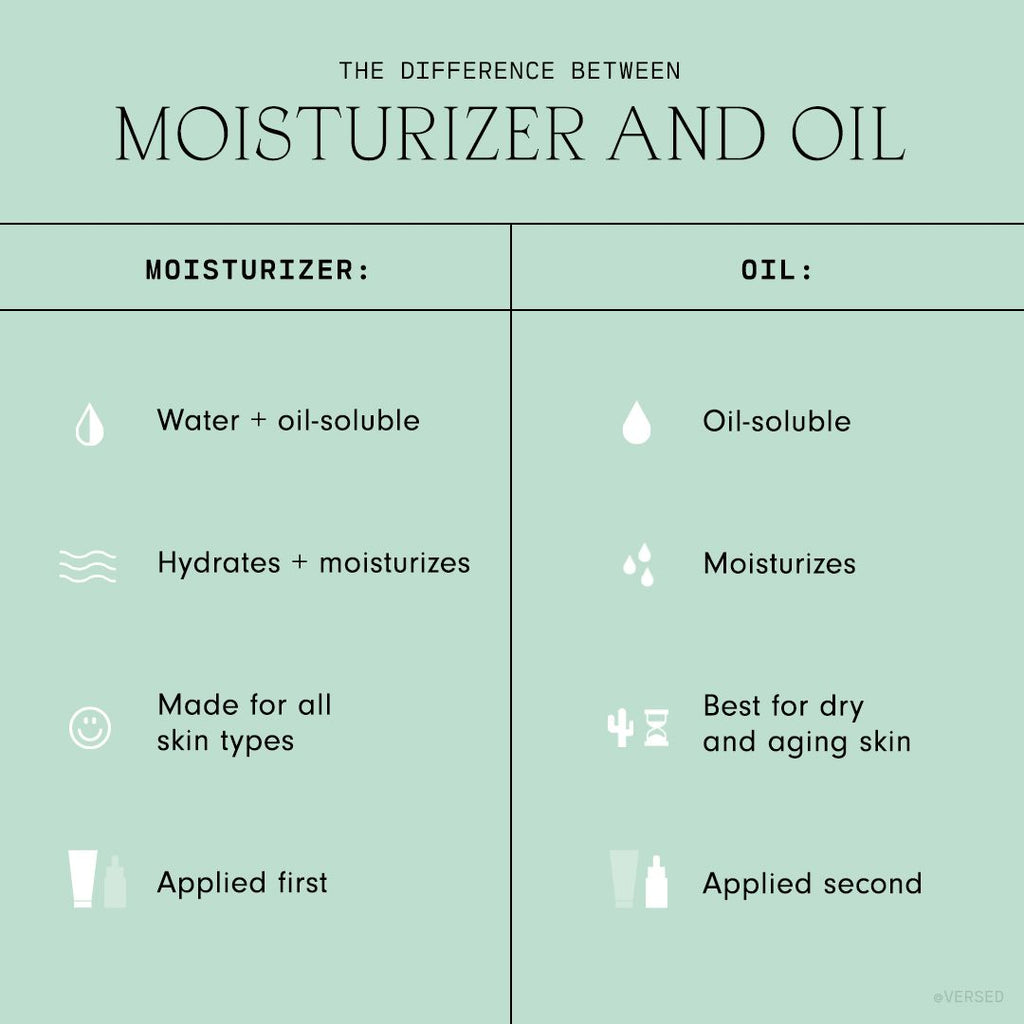
Moisturizer vs. Face Oils: What's the Difference?
When skin’s feeling dry, there’s only one place to turn: Moisture. Except, in reality, there are many choices you can make when it comes to fulfilling that craving. Lightweight or rich? Lotion or gel? Made for daytime or night? But the biggest conundrum of all, for many of our thirsty friends, is deciding between a moisturizer, facial oil, or mixing the two.
While both can deliver a more hydrated, softened complexion, there are key differences between a moisturizer and facial oil. Read on as we explain everything you need to know, including how to layer them.
What Is a Moisturizer?
Moisturizers are an essential part of any skincare routine for all skin types—even if you’re oily or acne-prone. Made with a mixture of water-soluble and oil-soluble ingredients, they hydrate and moisturize the skin (yes, there’s a difference) and strengthen its barrier. There are so many types of moisturizers out there: from lightweight gel-creams to something richer, like Skin Soak. There are even moisturizers that also target other concerns (like fine lines), as our Advanced Night Cream does.What Is a Facial Oil?
As you may guess, a facial oil is typically made with only oil-soluble ingredients, meaning its focus is more on moisturization, not hydration. That’s what makes them especially beneficial for dry and aging skin, two skin concerns exacerbated by a slow down of sebum production. When shopping oils, look for skin-friendly ones like marula, camellia, cloudberry seed, and jojoba oil.(Editor’s note: Our Sunday Morning Antioxidant Oil-Serum is not your average facial oil. It maintains both an oil phase and a water phase so you can get the best of both worlds in one smoothing, glow-inducing product. And it’s made for all skin types.)
Should I Use a Moisturizer, Oil, or Both?
Besides the ingredients, both moisturizer and oil have the same purpose: to soften the skin. All skin types will benefit from a moisturizer while dry and aging skin may prefer a facial oil. If you’re super thirsty or looking to up your barrier’s defenses during the winter months, we recommend using both.Any other differences will stem from the formulas themselves, so it’s best to look for ingredients compatible with your skin type. Need something beneficial for acne? Look for ingredients that calm redness and inflammation, like the green tea in Dew Point. If you’re super dry, try squalane, and if dehydrated, hyaluronic acid. Focused on brightening? Perhaps a vitamin C moisturizer is your best bet.
Don’t forget bodycare, too. Your décolletage, legs, arms, and lips all get dry, too. They also show signs of aging just as the rest of our skin does. To help repair both, smooth on an oil or body lotion (again, whatever is your preference) after showering or whenever you’re feeling flaky. And don’t skimp on chapped lips; we suggest our Conditioning Lip Oil, whose moisture outlasts your average balm.
How to Layer Moisturizer and Oil
As a rule of thumb, all skincare should be applied thinnest to thickest, so, moisturizer first, facial oil second. The one exception to the rule is our Antioxidant Oil-Serum; because it has both oil and serum properties, it can be applied before, after, or in place of your moisturizer.Both moisturizers and facial oils contain large molecules that are meant to slowly absorb, hydrating the skin’s outermost layer. If you want to penetrate deeper (which can help deliver a plump, youthful complexion), we suggest applying Moisture Maker before your moisturizer and/or oil. Because serums contain smaller molecules, they absorb more quickly and can reach deep beneath the layers of the skin and cause plumper, more hydrated skin above and below the surface.
More layering questions? This is the correct order in which you should apply your skincare.



